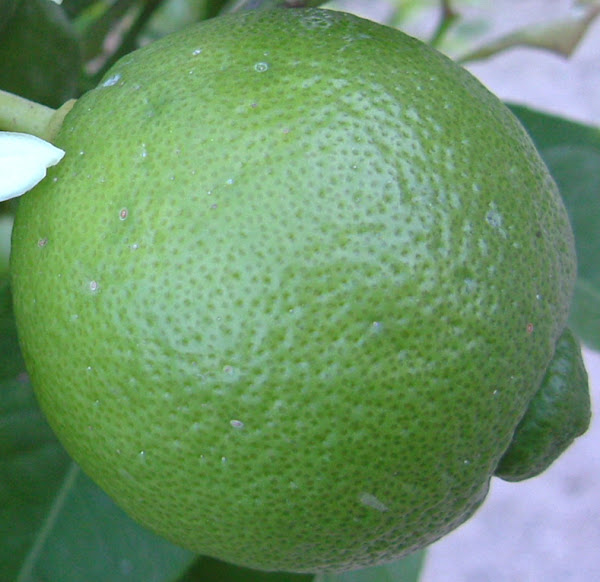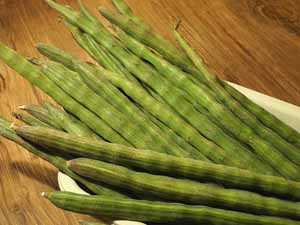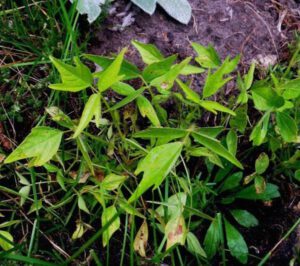Commercial lime farming is a very common and popular business in many countries around the world, especially in India and some other south Asian countries. Lime is very popular than lemon in those countries.
Lime is actually a citrus fruit, which is typically round and green in color, 1.2 to 2.4 inches in diameter and it contains acidic juice vesicles. It is a very common and popular fruit in many countries around the world. There are actually many species of citrus trees whose fruits are called limes, licluding Key lime, Makrut lime, Desert lime, Persian lime etc. Limes are a very rich source of vitamin C and they are typically sour in taste and are often used to accent the flavors of foods and beverages, and they are generally grown year-round.
Lime is much more popular than lemon in India. And in India, it is largely cultivated in Bihar, Rajasthan, Andhra Pradesh, Gujarat, Maharashtra and to a limited extent in other states. Citrus is an important fruit crop in many countries around the world, and lime is one of them. It is mainly known for it’s pulp and juice throughout the world.
World production of limes (combined with lemons for reporting) was 19.4 million tonnes in the year of 2018. Top producing countries were India, Mexico, Argentina, China, Turkey and Brazil. Total production from these countries accounted from around 65% of global lime production.
However, commercial lime farming is a very common and popular business in many areas. It can be a good way for earning good amount of money. You can start this business, even if you are a beginner.
Uses of Lime
As compared to lemons, the limes have much higher contents of sugars and acids. The lime juice is used to make limeade, and as an ingredient in many cocktails. Lime pickles are an integral part of Indian cuisine, especially in South India. In Kerala, the Onam Sadhya usually includes either lemon pickle or lime pickle. Other Indian preparations of limes include sweetened lime pickle, salted pickle, and lime chutney.
In cooking, lime is valued both for the acidity of its juice and the floral aroma of its zest. It is a common ingredient in authentic Mexican, Vietnamese and Thai dishes. Lime soup is a traditional dish from the Mexican state of Yucatan. It is also used for its pickling properties in ceviche. Some guacamole recipes call for lime juice. [1]
Dried limes are also used as a flavoring in Persian and Iraqi cuisine. Limes are used in American dessert known as Key lime pie, and also in Australian desert named marmalade. Lime extracts and lime essential oils are frequently used in perfumes, cleaning products, and aromatherapy.

Lime Nutrition
Raw limes are about 88% water, less than 1% fat, less than 1% protein, and around 10% carbohydrates. Vitamin C content is high in limes. 100 gram serving provides vitamin C about 35% of the DV. Lime juice contains slightly less citric acid than lemon juice. But it contains nearly twice the citric acid of grapefruit juice, and about 5 times the amount of citric acid found in orange juice.
Nutrients Per Serving
Limes are high in vitamin C, and some other essential nutrients. They also contain small amounts of riboflavin, niacin, phosphorus, folate and magnesium. Though limes are small in size, but they are loaded with nutrients (particularly vitamin C). According to healthline, one medium size whole lime provides:
- Carbs: 7 grams
- Calcium: 2% of the DV
- Calories: 20
- Fiber: 1.9 grams
- Protein: 0.5 grams
- Vitamin C: 22% of the DV
- Vitamin B6: 2% of the DV
- Iron: 2% of the DV
- Thiamin: 2% of the DV
- Potassium: 1% of the DV
Health Benefits of Lime
Limes are very nutritious and they have numerous health benefits. Here we are trying to describe the top health benefits of consuming lime.
- Limes are smaller in size but full in nutrients. They are a very good source of vitamin C and also contain small amounts of calcium, iron, vitamin B6, thiamine, potassium, niacin, riboflavin, phosphorus and magnesium.
- Limes are a very good source of antioxidants. Antioxidants are important compounds that defend your cells against moleccules called free radicals.
- Limes are high in active compounds that function as antioxidants in the body, ilcluding flavonoids, limonoids, kaempferol, quercetin and ascorbic acid.
- Limes are very helpful for boosting the immune system, as they are very high in vitamin C.
- Regular consumption of lime may promote healthy skin.
- High amount of vitamin C in lime may help to lower high blood pressure, which is a major risk for heart disease.
- Citrus fruits like limes are high in citric acid, which may prevent kidney stones by raising levels of citrate and binding stone-forming minerals in the urine.
- Iron is an essential nutrient needed to make red blood cells and transport oxygen around your body. And regular consumption of limes can increase iron absorption.
- Flavonoids, which act as antioxidants are found in limes. And flavonoids may help to stop the expression of genes that promote cancer progression.
- However, limes are very nutritious and they may help to improve immunity, prevent kidney stones, reduce heart disease risk factors, aid iron absorption , lower the risk of certain cancers and promote healthy skin.
Advantages of Lime Farming Business
Commercial lime farming is a very easy and profitable business, and many people around the world are already doing this business. Starting commercial lime farming business is very easy, even the beginners can also start this business. Commercial lime farming is a very common and popular business in many countries for making high profits. However, here we are trying to describe the top advantages of lime farming business.
- Starting commercial production of lime is very easy and simple. You can start commercial or large scale lime farming business even if you are a beginner.
- Growing and caring lime plants is very easy. The plants are very strong and they are very hardy also.
- Commercial lime farming is a very old and traditional business in some countries.
- Many people are already doing this business for making money. So, you don’t have to worry much about starting and operating your business.
- Commercial production of lime is highly profitable. So, you will be able to make good profits from this business.
- You can start this business, even if you are a beginner. Although, we recommend having practical training before starting this business commercially.
- Capital and labor requirements are relatively less as compared to many other crop farming business, but the returns are higher.
- Both demand and value of lime are good in the market. So, you don’t have to worry much about marketing your products.
- Caring the lime plants is very easy and simple. Anyone can care them with little efforts.
- You can even, start small scale production for utilizing your unused land.
- Commercial lime farming is a very good and profitable business. And it can be a great employment source for the people, especially who are educated but unemployed.
- Limes are very nutritious, and you can enjoy fresh limes if you start your own lime farming business.
How to Start Lime Farming?
Starting large scale or commercial lime farming business is very easy and simple. Even the beginners can also start this business easily. We recommend having practical training or knowledge from existing farmers if you are a beginner. Here we are trying to describe more information about starting and operating a commercial lime farming business.
Site Selection
Lime plants can grow well in all types of soils. But light soils having good drainage system are most suitable for commercial lime farming. pH range of the soil should be between 5.5 and 7.5. The lime plants can also grow in slightly alkaline and acidic soils. Light loam soil with good drainage system is considered best for lime production.
Prepare the Soil
Preparing the soil perfectly before planting lime plants is very important. Plough, cross plough and level the land properly. Add as much organic contents as you can while preparing the soil.
Climate Requirement For Lime Farming
Sub-tropical climate is the best suited for commercial lime farming business. Temperature below -4°C is very harmful for the young plants. And temperature around 25°C is best for optimum root growth of the lime plants.
Choose a Variety
There are numerous varieties of lime available to choose from. You can choose from any of these lime varieties depending on it’s availability and growth rate in your area. You can also consult with some existing farmers in your area for having better recommendations. Some common lime varieties in India are PKM, Prumalini, Sai Sarbati, Vikram, Kagzi, seed less etc.
Propagation
The lime plants are propagated by budding or by air layering.
Purchase Seedlings
You can purchase seedlings from any of your nearest nurseries. Lime plants are highly available in almost all nurseries.
Planting
Planting of lime plant is generally done at afternoon when sun light is reduced. Water the plants immediately after planting. Keep 4.5×4.5 meter spacing between plants. Dig pits of size 60×60×60cm for planting seedlings. Apply 10Kg of Farmyard Manure and 500g of single super phosphate to the pits while planting.
Caring
The lime plants are very strong and hardy, and they generally require less caring and other management. Although, taking additional caring will help the plants to grow well and produce more.
Fertilizing: The lime plants are heavy feeders. They require both organic and chemical fertilizers for better growth and maximum production. Apply well decomposed cow dung at the rate of 5 to 20 kg per tree when the age of the plant is between 1 and 3 years. Apply Urea at the rate of 100-300 grams per tree. Apply well decomposed cow dung at the rate of 25 to 50 kg and Urea 100 to 300 grams per tree when the tress are between 4 and 6 years of age. For the trees aged between 7 and 9 years, apply urea at the rate of 600 to 800 grams and well decomposed cow dung at the rate of 60 to 90 kg per tree. Apply around 100 kg well decomposed cow dung per tree and 800 to 1600 grams of Urea for the trees aged up to 10 years. Apply whole amount of cow dung during December month whereas apply Urea in two parts; apply first of Urea in February, and second dose in April-May month. At time of applying first dose of Urea, apply whole dose of SSP fertilizer.
Watering: Lime plants require regular irrigation for better growth and production. Lifesaving irrigation should be given in winters and summers. Irrigation is necessary for Flowering, Fruiting and proper plant growth. Although, over irrigation may also lead to diseases like Root rot and Collar rot. High frequency watering is beneficial.
Controlling Weeds: Weeds consume nutrients from the soil, so controlling them is very important. They can be controlled either manually by hand hoeing or chemically. Use glyphosate at the rate of 1.6 liter per 150 liter of water. Use glyphosate only on weeds not on crop plants.
Mulching: Mulching helps to retain moisture into the soil, and at the same time it also helps to prevent weeds. Use organic materials for using as mulch.
Intercropping: Intercropping is advisable only during the initial 2-3 years. Leguminous vegetables such as french bean, peas, cowpeas, or any vegetable can be cultivated as an intercrop.
Pruning And Training: For proper growth of trunk of plant, shoots in 50-60cm near ground level should be removed. Center of plant should remain open. Water suckers should be removed at early stages of growth.
Pests & Diseases
Like many other commercial crops, the lemon plants are also susceptible to some pests and diseases. Common pests and diseases of the lemon plants are Citrus psylla, Leaf miner, Scale insects, Aphids, Mealy bugs, Citrus canker, Gummosis, Powdery mildew, Black spot, Lemon scab, Collar rot, Zinc deficiency, Iron deficiency etc. Contact with an expert in your area if you notice any problem.
Harvesting
The lime fruits become ready for harvesting when they attain proper size, shape along with attractive color. Depending upon varieties, fruits become ready for harvesting in Mid-January to Mid-February. Try to harvest the fruits timely. Because proper time is the key for good quality fruits, as too early or too late harvesting will give poor quality.
Wash the fruits with clean water after harvesting, and then dip the fruits in Chlorinated water at the rate of 2.5 ml per liter water and then partially dry them. Do Citrashine wax coating along with foam to improve appearance along with maintaining good quality. Then dry the fruits under shade and them done packing. The fruits are generally packed in boxes.
Yield
Yield is generally low during the initial years. You can expect between 50 and 60 fruits per tree in their 2-3 years of age. Production increase as the plants age and you can expect good production from their 8th years of age. Average production is around 700 fruits per tree after stabilization.
Marketing
Marketing lime is very easy and simple. You will be able to sell your products easily in the local market. Although, you should set your marketing strategies before starting this business.
These are the common steps and ways for starting and operating a successful lime farming business. Hope this guide has helped you! Good luck and may God bless you!





